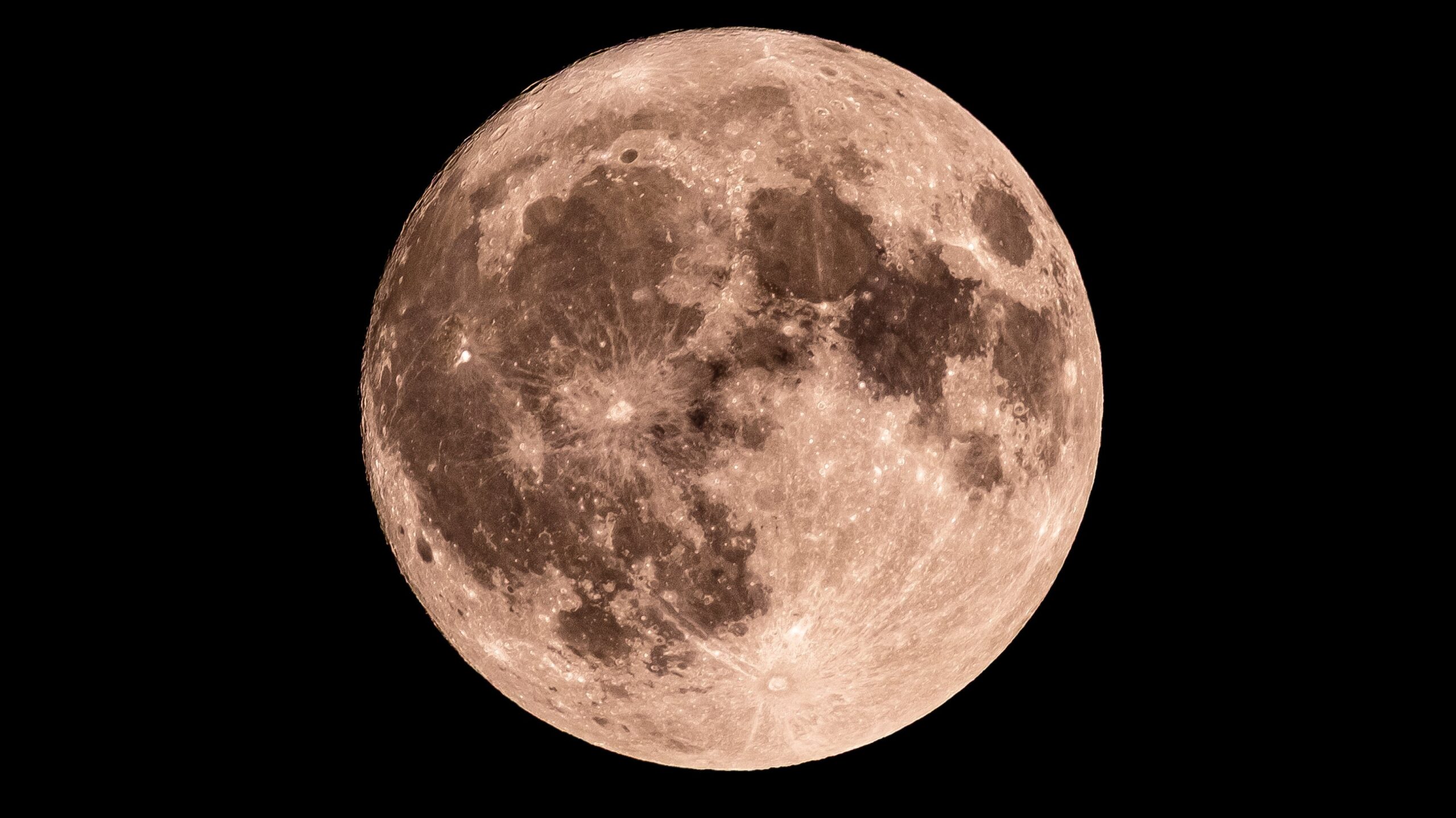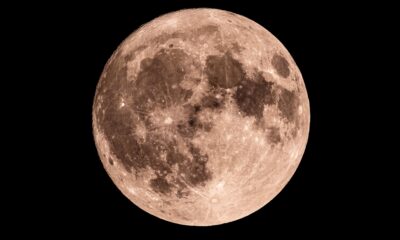Science
Discover Tonight’s Waxing Gibbous Moon on October 30

As of **October 30**, the moon is currently in its **Waxing Gibbous** phase, with approximately **59%** of its surface illuminated, according to data from **NASA’s Daily Moon Observation**. This phase marks the moon’s journey toward becoming a full moon, which is set to occur on **November 5**.
The lunar cycle, which spans about **29.5 days**, sees the moon transition from a New Moon to a Full Moon and back again. Each phase is a result of the changing angles between the Earth, Moon, and Sun, creating the various appearances that we observe from Earth. During the Waxing Gibbous phase, the moon appears more than half lit but not fully illuminated.
What to Observe Tonight
Tonight, sky watchers can look forward to several notable features on the moon’s surface. Without the need for special equipment, observers will be able to see significant lunar maria, including the **Mare Vaporum**, **Mare Crisium**, and **Mare Serenitatis**. For those with binoculars, the **Endymion Crater**, **Alphonsus Crater**, and **Mare Nectaris** offer intriguing details. A telescope will reveal even more, including the **Rima Hyginus**, **Linne Crater**, and the **Caucasus Mountains**.
The moon’s visibility and the details one can see vary based on location and weather conditions. Clear skies will enhance the viewing experience, allowing enthusiasts to appreciate the moon’s features more effectively.
Understanding Moon Phases
The moon’s phases are categorized into eight distinct stages, which reflect the varying amounts of sunlight that illuminate its surface during its orbit around the Earth. These phases include:
– **New Moon**: The moon is positioned between the Earth and the Sun, rendering it invisible.
– **Waxing Crescent**: A small sliver of light appears on the right side.
– **First Quarter**: Half of the moon is illuminated on the right side, resembling a half-moon.
– **Waxing Gibbous**: More than half of the moon is lit, approaching fullness.
– **Full Moon**: The entire face of the moon is illuminated.
– **Waning Gibbous**: The moon begins to lose light on the right side.
– **Third Quarter**: Another half-moon, but now the left side is illuminated.
– **Waning Crescent**: A thin sliver of light remains on the left side before the cycle resets.
Understanding these phases enhances our appreciation of the moon’s beauty and the celestial mechanics at play. Whether observing with the naked eye or using a telescope, the moon continues to captivate and inspire wonder among stargazers.
-

 Entertainment2 months ago
Entertainment2 months agoAnn Ming Reflects on ITV’s ‘I Fought the Law’ Drama
-

 Entertainment3 months ago
Entertainment3 months agoKate Garraway Sells £2 Million Home Amid Financial Struggles
-

 Health2 months ago
Health2 months agoKatie Price Faces New Health Concerns After Cancer Symptoms Resurface
-

 Entertainment2 months ago
Entertainment2 months agoCoronation Street’s Carl Webster Faces Trouble with New Affairs
-

 Entertainment2 months ago
Entertainment2 months agoWhere is Tinder Swindler Simon Leviev? Latest Updates Revealed
-

 Entertainment3 months ago
Entertainment3 months agoKim Cattrall Posts Cryptic Message After HBO’s Sequel Cancellation
-

 Entertainment2 months ago
Entertainment2 months agoOlivia Attwood Opens Up About Fallout with Former Best Friend
-

 Entertainment2 months ago
Entertainment2 months agoMasterChef Faces Turmoil as Tom Kerridge Withdraws from Hosting Role
-

 Entertainment3 months ago
Entertainment3 months agoMarkiplier Addresses AI Controversy During Livestream Response
-

 Entertainment4 months ago
Entertainment4 months agoSpeculation Surrounds Home and Away as Cast Departures Mount
-

 World2 months ago
World2 months agoCole Palmer’s Mysterious Message to Kobbie Mainoo Sparks Speculation
-

 Entertainment2 months ago
Entertainment2 months agoITV’s I Fought the Law: Unraveling the True Story Behind the Drama











